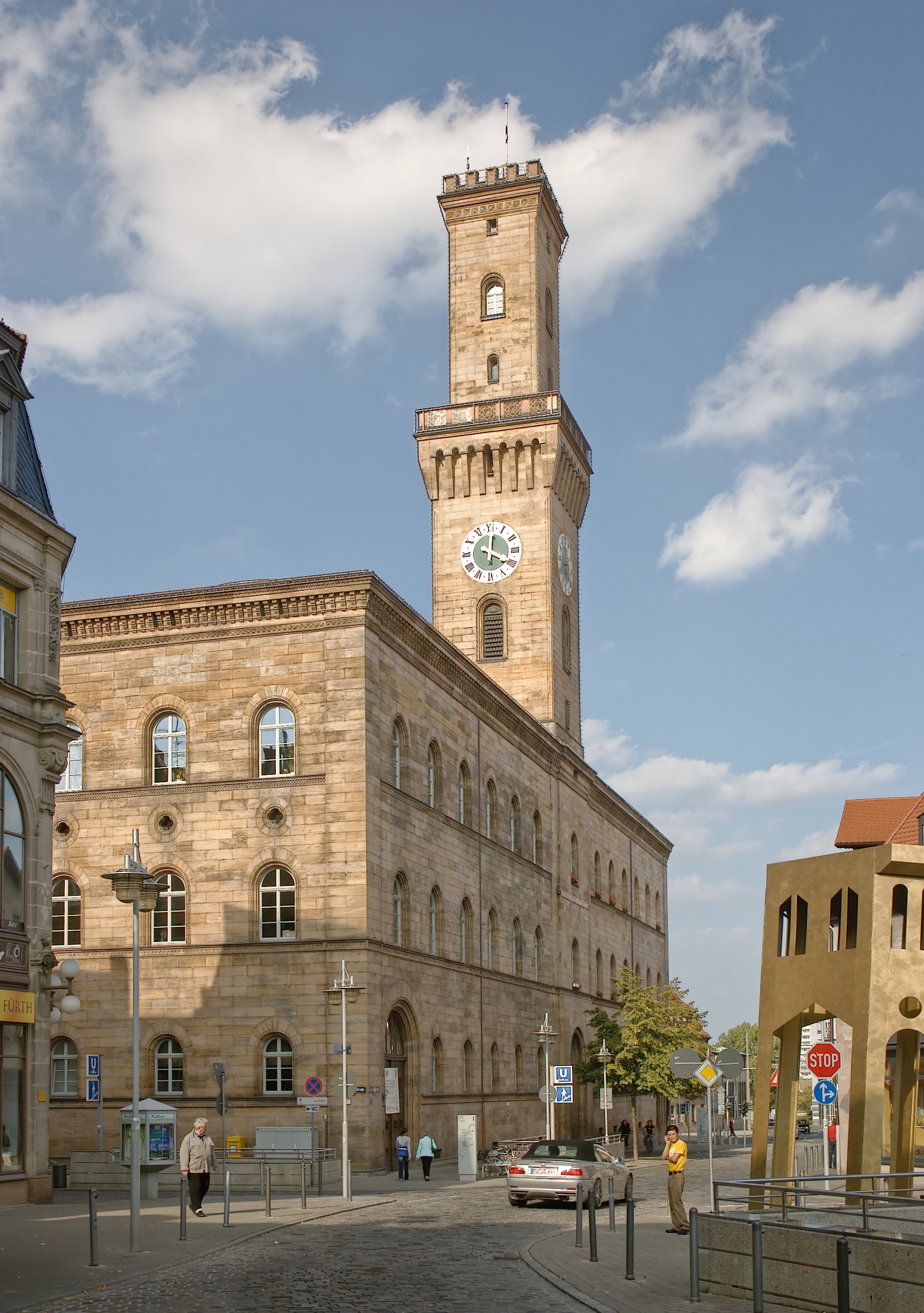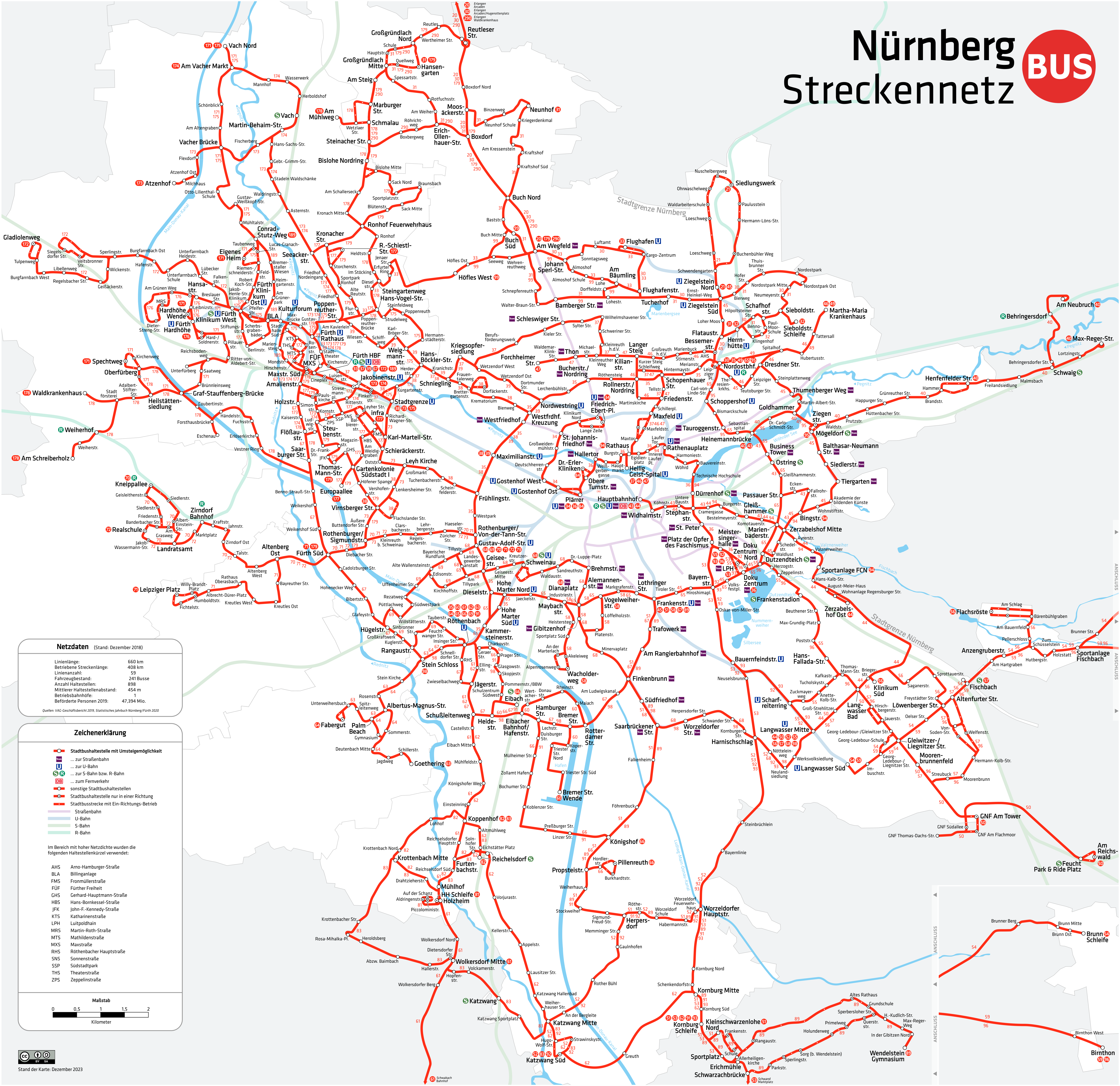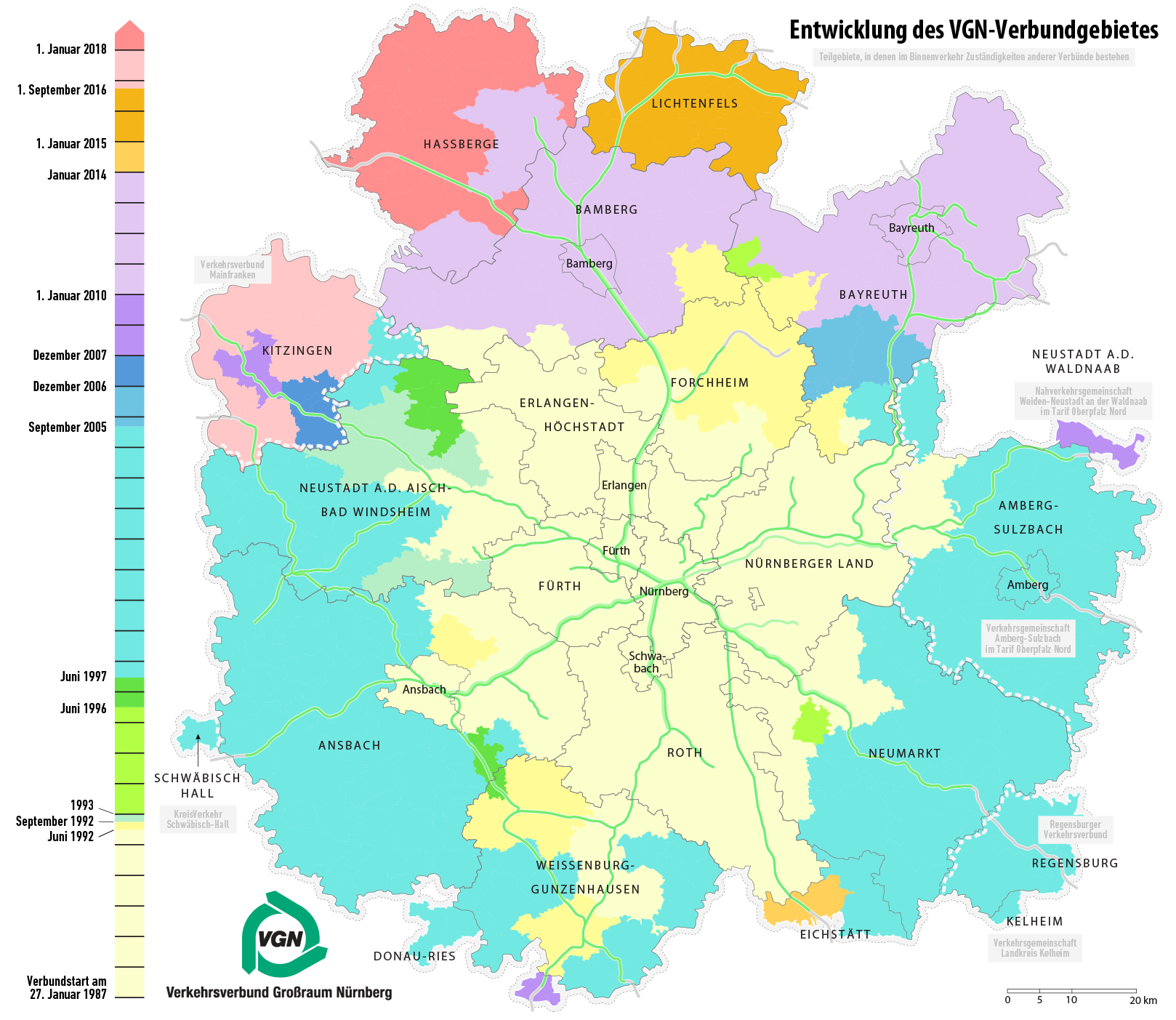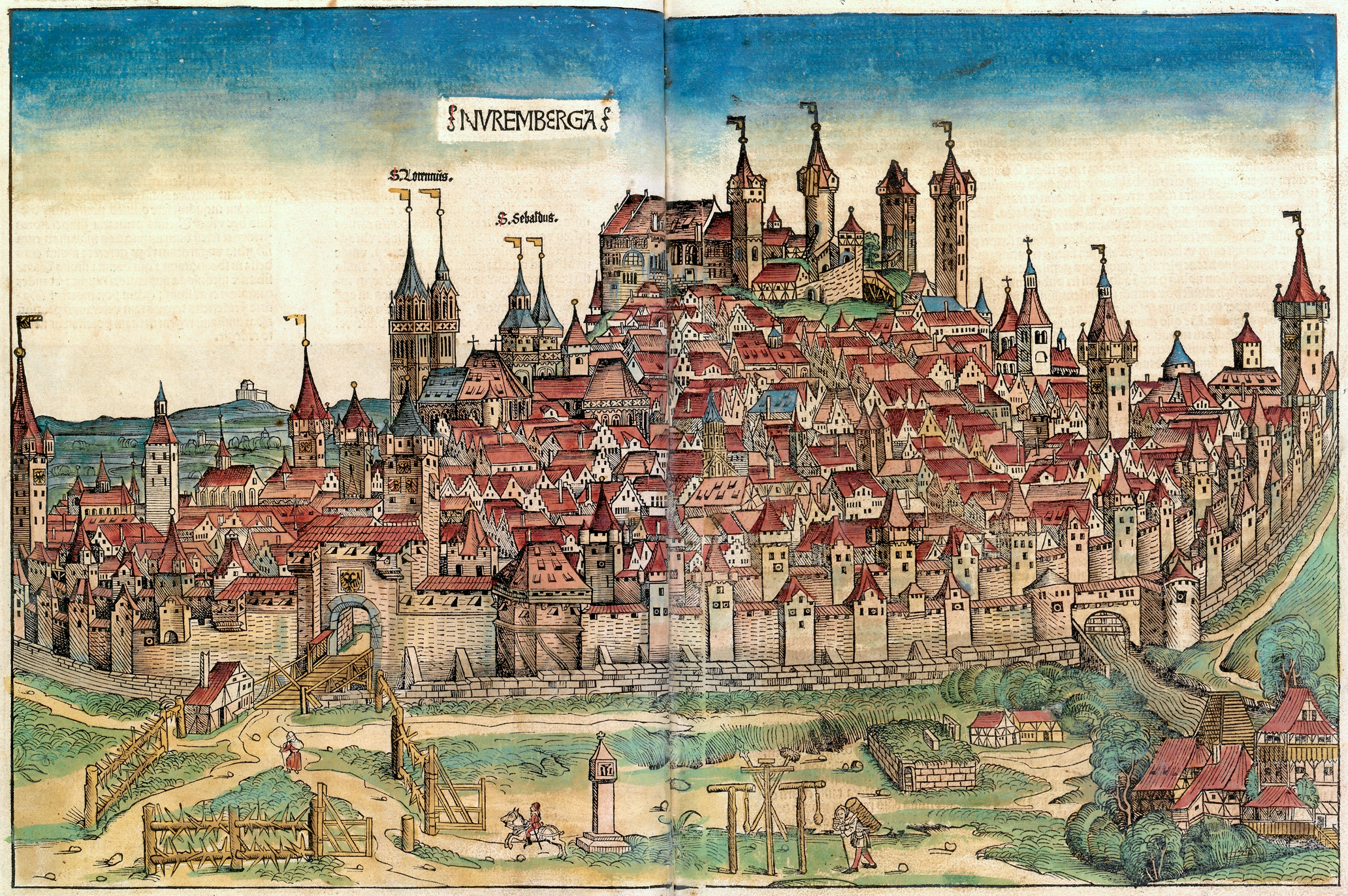|
Fürth Rathaus Station
Fürth Rathaus station is a Nuremberg U-Bahn station located in Fürth, run by the line U1. ''Rathaus'', meaning town hall in German, is the U-Bahn station for Fürth's town hall (not that of Nuremberg Nuremberg ( ; german: link=no, Nürnberg ; in the local East Franconian dialect: ''Nämberch'' ) is the second-largest city of the German state of Bavaria after its capital Munich, and its 518,370 (2019) inhabitants make it the 14th-largest ...). This station features a painting on the wall, representing the whole inner city of Fürth. The station is a central hub for public transport. Here, change for city bus lines 173, 174, 175, 177, 178, 179, as well as regional bus lines 124 and 125 is possible. Also, the station is the fourth U-Bahn station within Fürth, when coming from Nuremberg. References Nuremberg U-Bahn stations Railway stations in Germany opened in 1998 Buildings and structures completed in 1998 {{Nuremberg-U-Bahn-stub ... [...More Info...] [...Related Items...] OR: [Wikipedia] [Google] [Baidu] |
Fürth
Fürth (; East Franconian: ; yi, פיורדא, Fiurda) is a city in northern Bavaria, Germany, in the administrative division (''Regierungsbezirk'') of Middle Franconia. It is now contiguous with the larger city of Nuremberg, the centres of the two cities being only apart. Fürth is one of 23 "major centres" in Bavaria. Fürth, Nuremberg, Erlangen and some smaller towns form the "Middle Franconian Conurbation", which is one of the 11 German metropolitan regions. Fürth celebrated its thousand year anniversary in 2007, its first mention being on 1 November 1007. Geography The historic centre of the town is to the east and south of the rivers Rednitz and Pegnitz, which join to form the Regnitz to the northwest of the Old Town. To the west of the town, on the far side of the Main-Danube Canal, is the Fürth municipal forest (''Fürther Stadtwald''). To the east of Fürth, at roughly the same latitude, lies Nuremberg, and to the north is the fertile market-gardening area know ... [...More Info...] [...Related Items...] OR: [Wikipedia] [Google] [Baidu] |
Nürnberg U1
Nuremberg ( ; german: link=no, Nürnberg ; in the local East Franconian dialect: ''Nämberch'' ) is the second-largest city of the German state of Bavaria after its capital Munich, and its 518,370 (2019) inhabitants make it the 14th-largest city in Germany. On the Pegnitz River (from its confluence with the Rednitz in Fürth onwards: Regnitz, a tributary of the River Main) and the Rhine–Main–Danube Canal, it lies in the Bavarian administrative region of Middle Franconia, and is the largest city and the unofficial capital of Franconia. Nuremberg forms with the neighbouring cities of Fürth, Erlangen and Schwabach a continuous conurbation with a total population of 800,376 (2019), which is the heart of the urban area region with around 1.4 million inhabitants, while the larger Nuremberg Metropolitan Region has approximately 3.6 million inhabitants. The city lies about north of Munich. It is the largest city in the East Franconian dialect area (colloquially: "Fra ... [...More Info...] [...Related Items...] OR: [Wikipedia] [Google] [Baidu] |
Verkehrs-Aktiengesellschaft Nürnberg
The ''Verkehrs-Aktiengesellschaft Nürnberg'' (VAG; Nuremberg Transport Company) is the municipal company responsible for operating the U-Bahn, trams, and buses throughout the city of Nuremberg, in the state of Bavaria, Germany. VAG is a wholly owned subsidiary of ''Städtischen Werke Nürnberg'' (''Nuremberg Municipal Works''), and a member of the ''Verkehrsverbund Großraum Nürnberg'' (VGN; Integrated Transport Association of Greater Nuremberg). History Nürnberg-Fürther Straßenbahn On April 12, 1881, entrepreneur Heinrich Alfes from Bremen received a charter for the manufacture and operation of a ''Pferdebahn'', a horse-drawn streetcar. The first line began operation on August 25, 1881, on the route Staatsbahnhof (current Nuremberg Hauptbahnhof) - Lorenzkirche - Plärrer - Bauerngasse. In 1883, the enterprise was reorganized into a private Aktiengesellschaft with the name Nürnberg-Fürther Straßenbahn-Gesellschaft, or Nuremberg-Fürth Streetcar Company. The company e ... [...More Info...] [...Related Items...] OR: [Wikipedia] [Google] [Baidu] |
Verkehrsverbund Großraum Nürnberg
The (VGN; Transport Association Region Nuremberg) is the transit authority of the city of Nuremberg, the second largest city of the German state of Bavaria. Its jurisdiction covers the city and its surrounding area, responsible for the Nuremberg S-Bahn commuter trains, the Nuremberg U-Bahn, the Nuremberg tramway and buses. While not co-extensive with the wider Nuremberg Metropolitan Region, it covers most of it with the exception of several smaller towns and rural areas on the periphery, as well as Sonneberg in the neighboring state of Thuringia. The VGN coordinates transport and fares in area comprising the city of Nuremberg, Fürth, Erlangen, Schwabach, Bayreuth, Bamberg, Ansbach, Amberg and 17 surrounding districts. It is jointly owned by the state of Bavaria, by the city of Nuremberg, Fürth, Erlangen, Schwabach, Bayreuth, Bamberg, Ansbach, Amberg and the 17 surrounding districts, which are: * Landkreis Ansbach * Landkreis Amberg-Sulzbach * Landkreis Bamberg * Landkreis Bay ... [...More Info...] [...Related Items...] OR: [Wikipedia] [Google] [Baidu] |
Buses In Nuremberg
A bus (contracted from omnibus, with variants multibus, motorbus, autobus, etc.) is a road vehicle that carries significantly more passengers than an average car or van. It is most commonly used in public transport, but is also in use for charter purposes, or through private ownership. Although the average bus carries between 30 and 100 passengers, some buses have a capacity of up to 300 passengers. The most common type is the single-deck rigid bus, with double-decker and articulated buses carrying larger loads, and midibuses and minibuses carrying smaller loads. Coaches are used for longer-distance services. Many types of buses, such as city transit buses and inter-city coaches, charge a fare. Other types, such as elementary or secondary school buses or shuttle buses within a post-secondary education campus, are free. In many jurisdictions, bus drivers require a special large vehicle licence above and beyond a regular driving licence. Buses may be used for scheduled bus ... [...More Info...] [...Related Items...] OR: [Wikipedia] [Google] [Baidu] |
U1 (Nuremberg U-Bahn)
The U1 is an underground line in Nuremberg U-Bahn, Nuremberg. The first part of the line was opened on 1 March 1972. It is about long and has 27 stations. The termini are Langwasser Süd (Nuremberg U-Bahn), Langwasser Süd in the southeast and Hardhöhe (Nuremberg U-Bahn), Fürth Hardhöhe in the northwest. Until 11 December 2016 it shared tracks with the former booster line U11 between Eberhardshof and Messe. Those services are still run but no longer designated U11, instead being signed U1 like trains doing the full Langwasser-Hardhöhe run. Unlike U2 and U3 all trains are operated by a driver and there are no plans to automate U1. History Unlike in Munich U-Bahn, Munich where line designations were based on previous Trams in Munich, tramway lines - line U6 was the first to open, but designated number 6 based on a previous tram line 6 - or Berlin U-Bahn, Berlin where line numbers in the modern sense were only given out decades after the system opened and U1 and U2 do inde ... [...More Info...] [...Related Items...] OR: [Wikipedia] [Google] [Baidu] |
City Hall
In local government, a city hall, town hall, civic centre (in the UK or Australia), guildhall, or a municipal building (in the Philippines), is the chief administrative building of a city, town, or other municipality. It usually houses the City council, city or town council, its associated departments, and their employees. It also usually functions as the base of the mayor of a city, town, borough, county or shire, and of the executive arm of the municipality (if one exists distinctly from the council). By convention, until the middle of the 19th century, a single large open chamber (or "hall") formed an integral part of the building housing the council. The hall may be used for council meetings and other significant events. This large chamber, the "town hall" (and its later variant "city hall") has become synonymous with the whole building, and with the administrative body housed in it. The terms "council chambers", "municipal building" or variants may be used locally i ... [...More Info...] [...Related Items...] OR: [Wikipedia] [Google] [Baidu] |
German Language
German ( ) is a West Germanic languages, West Germanic language mainly spoken in Central Europe. It is the most widely spoken and Official language, official or co-official language in Germany, Austria, Switzerland, Liechtenstein, and the Italy, Italian province of South Tyrol. It is also a co-official language of Luxembourg and German-speaking Community of Belgium, Belgium, as well as a national language in Namibia. Outside Germany, it is also spoken by German communities in France (Bas-Rhin), Czech Republic (North Bohemia), Poland (Upper Silesia), Slovakia (Bratislava Region), and Hungary (Sopron). German is most similar to other languages within the West Germanic language branch, including Afrikaans, Dutch language, Dutch, English language, English, the Frisian languages, Low German, Luxembourgish, Scots language, Scots, and Yiddish. It also contains close similarities in vocabulary to some languages in the North Germanic languages, North Germanic group, such as Danish lan ... [...More Info...] [...Related Items...] OR: [Wikipedia] [Google] [Baidu] |
Nuremberg
Nuremberg ( ; german: link=no, Nürnberg ; in the local East Franconian dialect: ''Nämberch'' ) is the second-largest city of the German state of Bavaria after its capital Munich, and its 518,370 (2019) inhabitants make it the 14th-largest city in Germany. On the Pegnitz River (from its confluence with the Rednitz in Fürth onwards: Regnitz, a tributary of the River Main) and the Rhine–Main–Danube Canal, it lies in the Bavarian administrative region of Middle Franconia, and is the largest city and the unofficial capital of Franconia. Nuremberg forms with the neighbouring cities of Fürth, Erlangen and Schwabach a continuous conurbation with a total population of 800,376 (2019), which is the heart of the urban area region with around 1.4 million inhabitants, while the larger Nuremberg Metropolitan Region has approximately 3.6 million inhabitants. The city lies about north of Munich. It is the largest city in the East Franconian dialect area (colloquially: "F ... [...More Info...] [...Related Items...] OR: [Wikipedia] [Google] [Baidu] |
Nuremberg U-Bahn Stations
Nuremberg ( ; german: link=no, Nürnberg ; in the local East Franconian dialect: ''Nämberch'' ) is the second-largest city of the German state of Bavaria after its capital Munich, and its 518,370 (2019) inhabitants make it the 14th-largest city in Germany. On the Pegnitz River (from its confluence with the Rednitz in Fürth onwards: Regnitz, a tributary of the River Main) and the Rhine–Main–Danube Canal, it lies in the Bavarian administrative region of Middle Franconia, and is the largest city and the unofficial capital of Franconia. Nuremberg forms with the neighbouring cities of Fürth, Erlangen and Schwabach a continuous conurbation with a total population of 800,376 (2019), which is the heart of the urban area region with around 1.4 million inhabitants, while the larger Nuremberg Metropolitan Region has approximately 3.6 million inhabitants. The city lies about north of Munich. It is the largest city in the East Franconian dialect area (colloquially: "Franconian"; ... [...More Info...] [...Related Items...] OR: [Wikipedia] [Google] [Baidu] |









